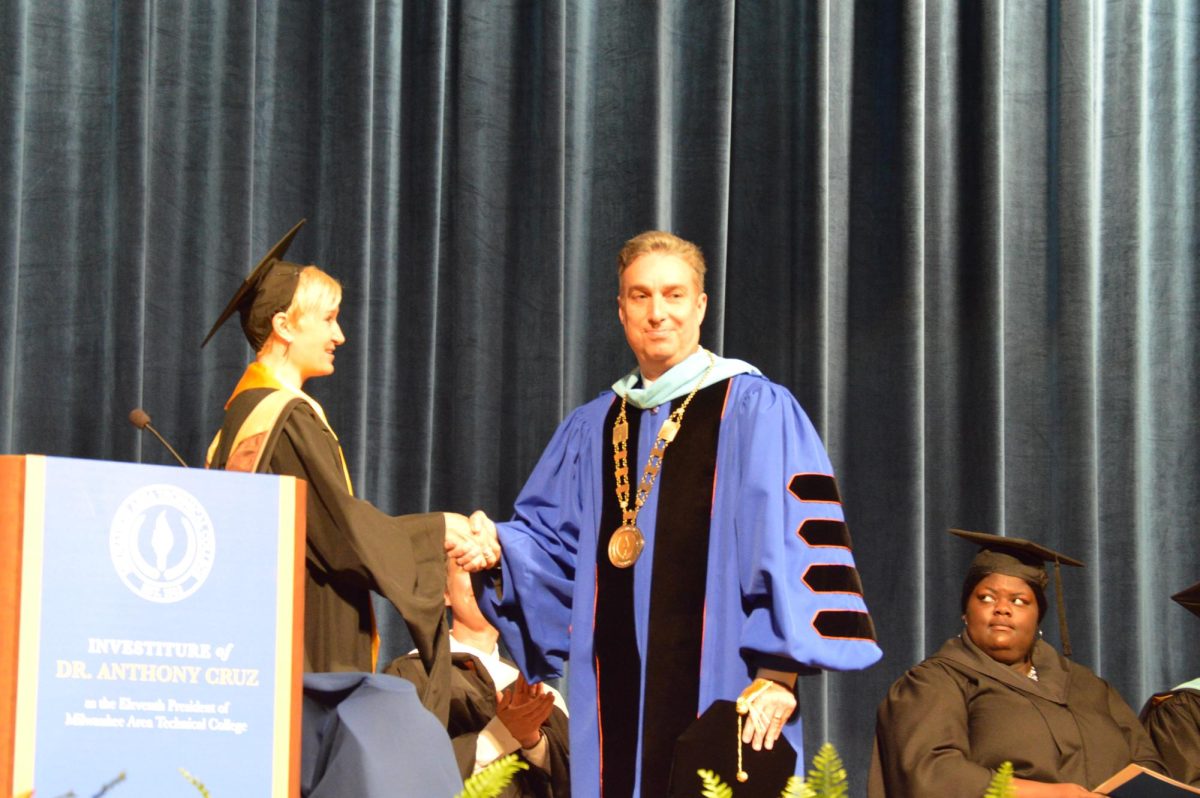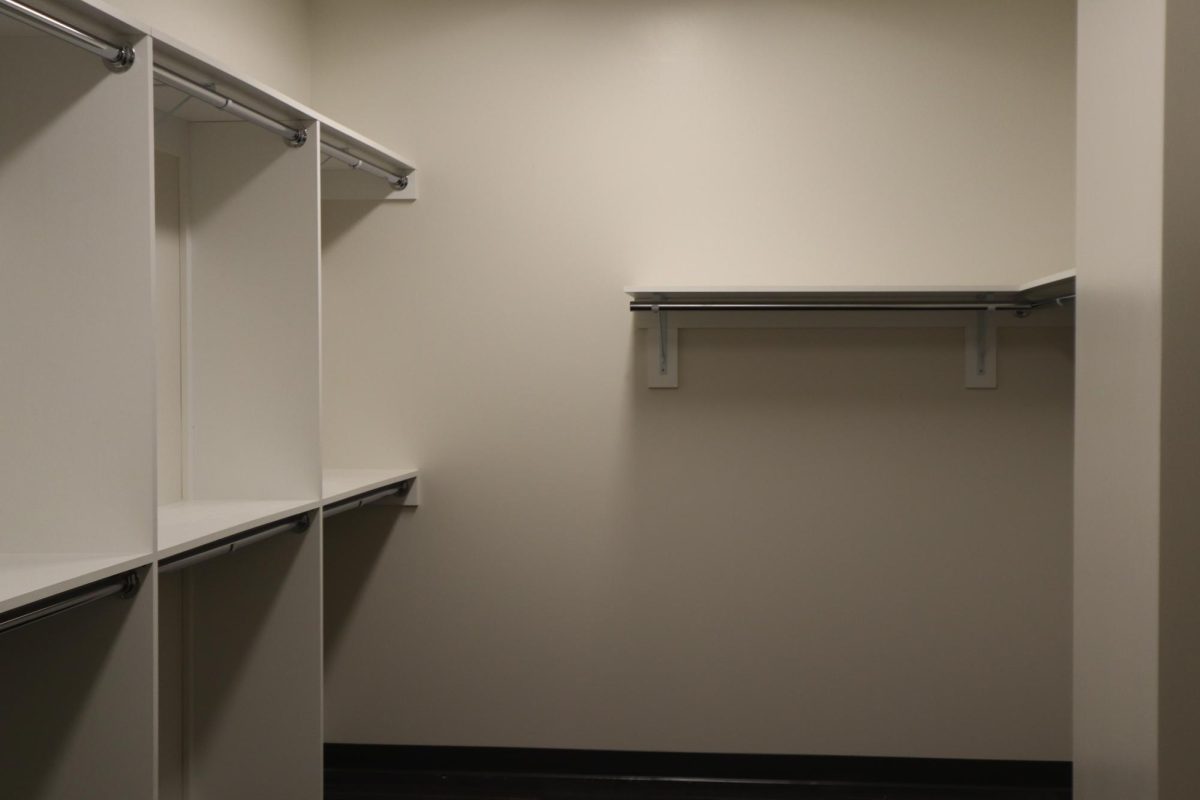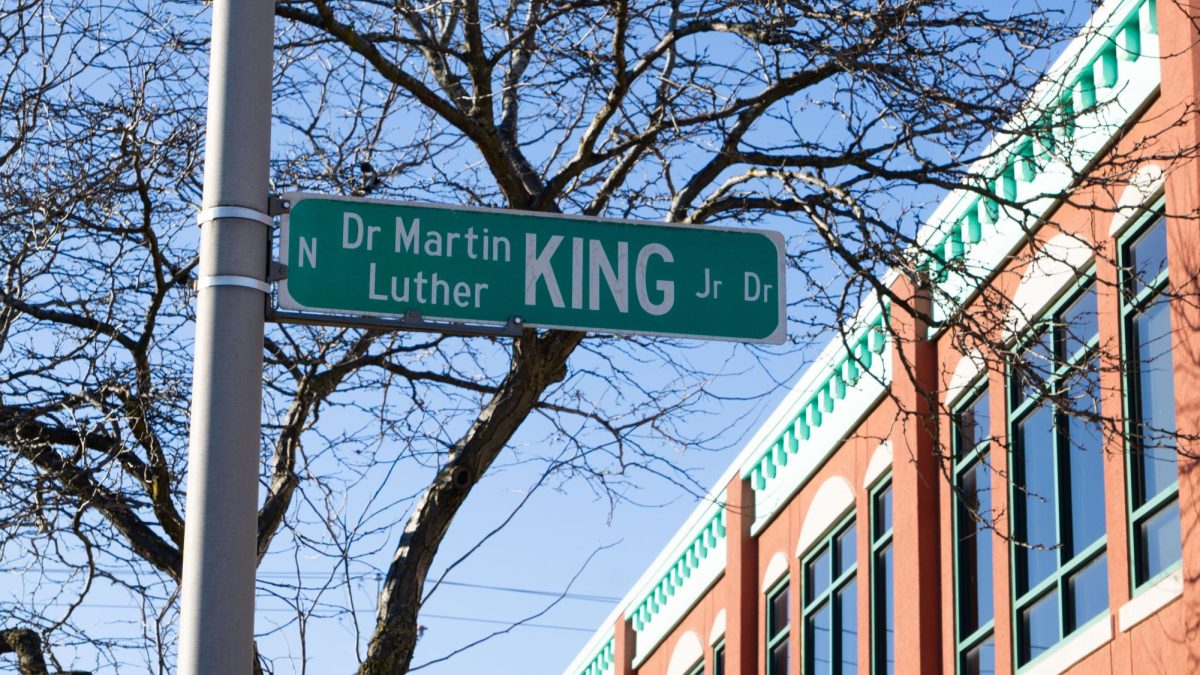MATC has taken a giant leap in producing green energy as well as instructing those interested in learning a renewable energy technology career.There is no doubt MATC has advanced as leader of green energy use and as an educational institution by promoting the advantages of non-fossil fuel use. The new Photovoltaic facility on Milwaukee’s north side is the largest solar farm in the state.
An on site educational tour was provided by Michael Sargent, CFO of MATC, for Sarah Aguado, Editor-in-Chief of The Times and myself. The tour gave us a thorough understanding of this project and how exciting it is for MATC as well as our community.
The first impression of the 32-acre site gave me a feeling as if I was on another planet.
The scope of the project and amount of solar panels is extremely impressive. By late summer of this year over 2,500 solar panels in units of 5 each will be in place producing 510kw with an energy savings of over $75,000.
Michael Sargent explained how the site required special engineering to deal with the slopes, mechanical cranes, storm water, and pre-existing underground garbage. The garbage required approved handling by the DNR of Wisconsin.
Securing the base of the solar panels so they could be portable was also a major consideration. The nearby radio antennae of Channels 10 & 36 have support lines that could produce falling ice in winter.
Special rotating discs run along the wires to eliminate the possibility of ice forming and falling on the solar panels. The Milwaukee Public Television transmitter will operate by energy produced from the solar panels.
Using the landscape, design configurations were implemented for the placement of the solar panels to withstand high winds.
In comparison to roof type installations that could lay flatter, the Photovoltaic site had to find the best compromise for positioning and yet still gain good directional solar activity. The 32-acre site also provides room for future expansion.
Besides handling all the on site engineering surprises, a special bracket was designed enabling the lift of the solar panels into their final position. The bracket design team included Al Evinrude, Michael Sargent, both of MATC, Tom Kelly from Johnson Controls, and Ben Collins of Pieper Electric.
The Photovoltaic site provides a great opportunity for students to work on solar panels as well as understand other technological aspects. A special area has been installed which will give the students a place to dismantle various types solar panels and reassemble them in order to further their energy related educational experiences.
The area will also provide plug-in charging stalls for electric powered vehicles directly from solar energy. This of course eliminates use of the electrical grid.
The entire site will have an extensive security system and keep detailed real-time logs of all solar equipment and activities. These data log records can be used to re-enact specific details on how the solar panels reacted at certain periods.
This meta-data is collected and analyzed at 15 seconds, 1-minute and 15-minute intervals. This provides valuable educational research material for students as well as a complete monitoring record of the entire system.
The logs will also be accessible via the Internet. The data material will be a teaching research tool for students from K-12 and through Graduate school levels.
Most of the project used parts made in Wisconsin and provided jobs from local sources. Besides providing an in-depth renewable energy educational tool, the MATC Photovoltaic project lays out an example for the City of Milwaukee and surrounding communities to follow.
Hopefully, more facilities will follow MATC’s lead. The energy advantages are enormous and provide a huge reduction of our carbon footprint. The Photovoltaic installation puts MATC on a special page of energy history. Past energy history has given us thresholds that have changed our society as seen in Edison and Tesla’s electrical research, automobile and air transportation, as well as going from an analog to a digital society.
MATC’s Photovoltaic facility will have it’s own special chapter in energy history – being the first on such a large educational scale. As an educational institution, there is no doubt MATC will keep producing green energy careers on a broad scale.
The Photovoltaic site is an extremely useful compliment to the menu of Renewable Energy and Natural Science courses already offered here.
With the recent BP oil spill crisis, MATC’s Photovoltaic example should send a jolt to our community developers for the need to use green energy and get off the coal and crude oil drum wagon. Additional photos can be found on the MATC website under photo galleries done by Sue Ruggles, Photographer of MATC.































































